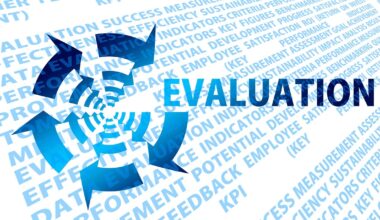Leveraging Big Data in Credit Scorecard Development
The world of credit management has seen remarkable growth, especially with the emergence of big data analytics. Credit scorecards, which serve as essential tools in evaluating credit risk, have evolved significantly due to advancements in data processing technology. Traditional methods of credit scoring relied heavily on historical data and simplistic algorithms. However, the increasing availability of vast datasets has created opportunities for more nuanced and accurate assessments of creditworthiness. Implementing big data techniques allows financial institutions to sift through massive volumes of information, including behavioral data, transaction histories, and demographic details. The ability to draw insights from diverse data sources enables the development of complex models that can predict an individual’s credit risk more accurately. Moreover, combining machine learning algorithms with big data provides robust predictive capabilities, enhancing decision-making processes. This paradigm shift is more than just enhanced accuracy; it fosters greater financial inclusion by extending credit to individuals with limited traditional credit histories. As a result, lenders can tap into new markets, mitigating risks associated with incorrect assessments. In summary, leveraging big data is revolutionizing credit scorecard development, establishing a new standard in credit risk management.
To further understand the impact of big data on credit scorecards, it’s important to recognize the various data sources at play. Traditional credit scorecards primarily relied on credit bureau data, which included payment histories, outstanding debts, and public records. However, big data allows for a broader spectrum of information. For instance, data from social media platforms can offer insights into an individual’s lifestyle and character. Alternative data sources also include utility payment records, rental history, and even online purchasing behaviors. By integrating these datasets, financial institutions can create a more holistic view of a borrower’s creditworthiness. The incorporation of behavioral data allows lenders to assess credit risks linked with specific consumer habits. Moreover, big data analytics can help identify patterns that indicate potential credit risk or repayment behavior. Consequently, lenders can develop tailored products and services aimed at specific segments of the market. It’s about more than just the numbers; it’s about creating a profile that genuinely reflects an individual’s financial situation. As we move towards a digital economy, these innovative techniques promise to reshape the way credit risk is evaluated, paving the way for more inclusive financial practices.
The algorithms that underpin modern credit scorecards are increasingly sophisticated, largely due to the capabilities offered by big data techniques. Machine learning and artificial intelligence (AI) can analyze various factors and their interconnections at a speed and efficiency that traditional methods simply cannot match. These intelligent systems continuously learn from new data input, allowing them to refine their predictive accuracy over time. This adaptability is critical, particularly in fluctuating economic conditions where consumer behaviors may evolve rapidly. Furthermore, big data facilitates real-time processing, enabling financial institutions to adjust their credit assessment strategies on-the-fly. By responding to emerging patterns and trends in borrower behavior, lenders can not only mitigate risks but also identify opportunities for new product offerings. Importantly, this approach enhances the customer experience by enabling quicker decisions and clearer communication regarding credit evaluations. However, ethical considerations are paramount; data privacy and security must be rigorously protected. As we explore the potential of big data in credit scorecard development, striking the right balance between innovation and ethical responsibility will be crucial for long-term success and consumer trust.
Challenges and Solutions in Data Utilization
Despite the numerous advantages, leveraging big data in credit scorecard development presents distinct challenges. Data quality is a paramount concern; inaccurate or incomplete data can lead to misguided lending decisions with detrimental implications. Financial institutions must ensure robust data governance practices to maintain high-quality datasets. Moreover, integrating diverse data types can introduce complexities, making it essential for organizations to employ advanced data harmonization techniques. Additionally, the issue of consumer consent is critical—ensuring that all data is acquired lawfully and ethically can be challenging, especially in regions with stringent data protection regulations. Transparency is vital; lenders need to clearly communicate how data will be used in credit assessments. Additionally, users should possess control over their data, which underlines the importance of ethical data practices. Furthermore, the computational power required for processing vast amounts of data can be costly. Thus, investing in the right infrastructure is crucial for optimal analytical capabilities. Through addressing these challenges, organizations ensure not only operational efficiency but also consumer confidence and loyalty, thereby gaining a competitive edge in the lending landscape.
The role of data analytics in the enhancement of credit scorecards cannot be overstated. With the persistent advancements in technology, analytics tools empower data scientists to uncover valuable insights that might be imperceptible through traditional methods. Predictive modeling plays a key role in forecasting potential credit risk while considering multiple variables. In this context, clustering techniques can group similar customers based on their credit behaviors and tendencies. By identifying customer segments, lenders can tailor their risk management strategies accordingly. Not only does this improve the accuracy of credit assessments, but it also informs marketing strategies around targeted products and services. Furthermore, visualization tools allow organizations to interpret complex data intuitively, bridging the gap between raw data and actionable insights. For instance, dashboards can present vital metrics regarding borrower behaviors and trends, enabling stakeholders to make informed decisions effectively. As the credit landscape shifts towards a data-driven future, these analytics-driven methodologies are essential for fostering innovation in credit risk assessment. Banks and financial institutions embracing these strategies can optimize their operations, minimize losses, and ultimately serve a broader customer base.
Incorporating ethical practices into the development of credit scorecards is essential, especially when utilizing big data. The potential for bias within algorithms can inadvertently lead to unfair lending practices if not actively mitigated. Financial organizations must prioritize fairness and transparency in all their credit assessments. This involves regular audits of their scoring models to identify potential biases and rectify them before they impact lending decisions. Moreover, employing diverse data sets can contribute to minimizing bias, as it creates a more comprehensive understanding of borrowers from various backgrounds. Consumer representation should be a core principle in the ongoing refinement of scoring algorithms to ensure equitable treatment. Establishing partnerships with regulatory bodies and consumer advocacy groups can further enhance the fairness of credit scoring practices. Continuous engagement with stakeholders allows for the integration of insights and concerns related to big data usage. Ultimately, a focus on ethical credit scorecard development supports not only organizational integrity but also the well-being of consumers, reinforcing a fair lending environment. Building trust in the lending process is paramount for financial institutions seeking to thrive in an increasingly competitive market.
Looking ahead, the future of credit scorecard development will be defined by an evolving landscape of technological and regulatory changes. As big data continues to reshape credit risk management, organizations must remain agile to adapt to new challenges and opportunities. Predictive analytics will increasingly rely on real-time data inputs, enabling lenders to make quicker, more informed decisions. The integration of blockchain technology may also transform how data is securely shared and verified, fostering greater trust between lenders and borrowers. Additionally, as regulatory frameworks around data usage become more stringent, compliance will be a vital focus area for financial institutions. Emphasizing transparency and consumer rights in data usage will enhance customer loyalty and brand reputation. Innovations such as behavioral scoring and AI-driven insights will become integral to maintaining competitive advantages. Moreover, as digital transformation accelerates, the potential for personalization within lending products will reshape user experiences. The synergy of these trends spells a significant evolution in credit scorecards, prioritizing accuracy, transparency, and fairness. Embracing this new paradigm, lenders can better serve their customers while effectively managing risk, ensuring relevance in a rapidly changing financial landscape.
In conclusion, leveraging big data is not merely a trend in credit scorecard development; it is a fundamental shift towards comprehensive risk assessment methodologies. As data becomes a more critical component of financial decision-making, organizations must harness its potential responsibly. By integrating diverse and rich data sets, utilizing advanced technology, ensuring ethical practices, and prioritizing transparency, lenders can create accurate and fair credit assessments. The interplay of complex algorithms and human oversight will be vital to bridging any gaps in understanding consumer behaviors and tendencies. Moreover, fostering collaboration among various stakeholders will ensure that diverse perspectives are considered in developing credit risk strategies. This collaborative approach can help illuminate the challenges and opportunities that arise in this evolving landscape. In essence, the innovative use of big data in credit scorecard development presents an exciting avenue for the financial sector. It offers the promise of improved inclusivity, equitable treatment, and more informed lending practices. As financial institutions navigate this terrain, the ultimate goal is not only to enhance their operational efficiencies but also to contribute positively to the economic landscape and societal welfare.


